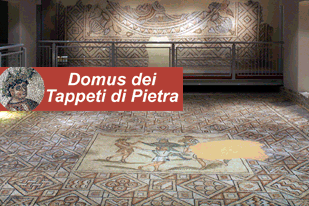National museum in the former Monastry of San Vitale in Ravenna.







National museum in the former Monastry of San Vitale in Ravenna. Hotels near the National museum.
Photo: 1)Monastery of S.Vitale, old income, 2)Monastery of San Vitale side mausoleum, 3) Monastery of San Vitale side church, 4) Cloister monastery side S.Vitale Basilica, 5) Cloister monastery side National Museum, 6) Monastery of S.Vitale of night, 7) the entry for the Museum, S.Vitale and Galla Placidia
In terms of is economic scale and prestige, this was the most important town abbey until 1797, when it was confiscated by a Napoleonic decree and suppressed.
It was then made into a barracks and it today host the offices of the Council of Architectural and scenic heritage, the mosaic restoration school and the National museum, with a collection of archaeological remains, fabrics, ivories, icons, arms, coins and ceramics.
Benedictine monastery, that was established as from the X century alongside the Byzantine basilica of San Vitale, which extended around three cloisters, built between the XV and XVI centuries.
Between the 17th and 18th centuries it housed a community of about a hundred people, half of which of religious orders, and comprised all the services and environments necessary for their maintenance: refectories, kitchens, ovens, dormitories, larders, cellar, classrooms, the capitular hall, administrative and accounts offices, archives, stables, market gardens, warehouses, and stores for corn, pine nuts, timber, marble.
Around the mid 18th century a " surgical and medical museum” was set up, with a collection of instruments and devices used in the treatment of a variety of illnesses, with wax model reproductions of parts of the anatomy and which illustrated surgical operations.
The prosperity of the abbey was largely thanks to the substantial landed wealth, which was administered with Benedictine rigour and built up over time thanks to donations and bequests, as well as imperial and pontifical privileges.
In the mid 17th century, the abbey lands extended for about 6,400 hectares to the North and west of the town. Almost half of them consisted of dry land, formed from extensive estates that were divided into plots cultivated mainly with wheat by families of sharecroppers.
The remainder of the land was given over to natural fields, pastures, valleys and pine forests, in which the abbey reared cattle, horses and sheep. It also had fishing rights, and gathered timber and pine nuts that it then sold.
During the period of papal domination it expanded its lands, with the addition of the land reclaimed from the swamps, it acted as a protagonist in a variety of land reclamation projects which involved the valleys to the North and North-west of the town: the "clementine" reclamation projects, embarked on in 1531 by Pope Clement VII, and the "gregorian" project started by Gregory XIII in 1578.
They consisted of complex land drying operations that aimed to reclaim the fertile lands and limit the spread of malaria, and which was ongoing despite a series of environmental problems and setbacks right up to the end of the 18th century.
Prof. Gianni Morelli, Anna Missiroli
The pleasure of fine accommodation in the centre of Ravenna: we recommend the Fabbri hotels for a pleasant stay as follows:
The Centrale Byron Hotel, 3-star hotel in the centre of Ravenna, close to the main momuments;
The Bisanzio Hotel, 4-star hotel in the centre of Ravenna, close to the main momuments;
Once you have reached the hotel and parked your car, forget it and walk everywhere, because everything is within walking distance.
© reserved copyright





